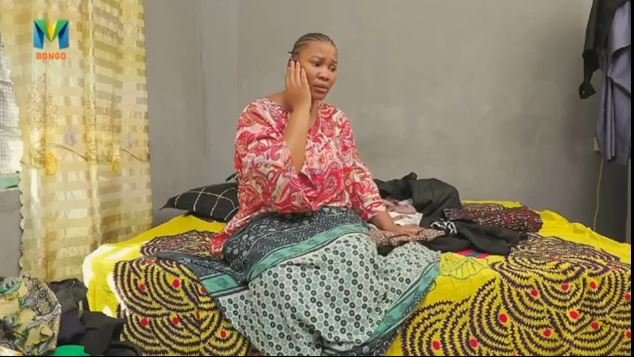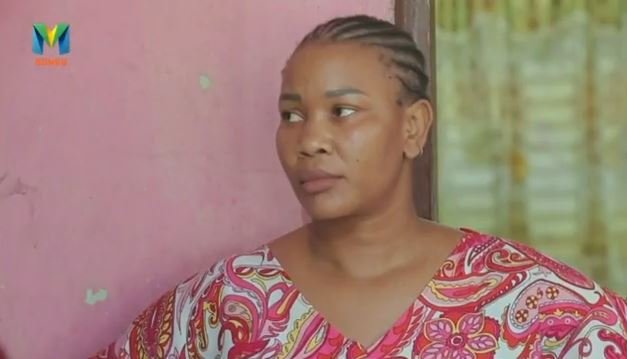Integrating Traditional Medicine with SHA
Introduction
Traditional medicine, encompassing herbal remedies, spiritual healing, and cultural practices, is a cornerstone of healthcare for many Kenyans, with an estimated 70–80% of the population relying on it for primary care, according to the World Health Organization (WHO, 2023). In Kenya’s diverse medical landscape, where 53 million people face rising non-communicable diseases (NCDs) and limited access to conventional care, traditional medicine bridges critical gaps, particularly in rural areas. The Social Health Authority (SHA), launched on October 1, 2024, under the Social Health Insurance Act of 2023, replaced the National Health Insurance Fund (NHIF) to advance Universal Health Coverage (UHC) by 2030. By September 2025, SHA has registered 26.7 million members, treated 4.5 million without out-of-pocket costs, and disbursed KSh 8 billion to frontline services. Integrating traditional medicine into SHA’s framework—spanning the Primary Health Care Fund (PHCF), Social Health Insurance Fund (SHIF), and Emergency, Chronic, and Critical Illness Fund (ECCIF)—offers a pathway to enhance access and cultural relevance. This article explores SHA’s approach to integrating traditional medicine, detailing policies, benefits, challenges, and practical steps, grounded in Kenya’s medical situation, government reports, GeoPoll surveys, and public sentiment on X.
The Role of Traditional Medicine in Kenya
Traditional medicine is deeply embedded in Kenya’s healthcare system:
- Prevalence: The Kenya Demographic and Health Survey (KDHS 2022) estimates 70% of rural households and 50% of urban ones consult traditional healers for conditions like malaria, respiratory infections, and chronic pain. Herbalists and spiritual healers serve 80% of pastoralist communities in northern Kenya.
- Cultural Significance: Practices like Ayurveda, acupuncture, and herbal remedies (e.g., Moringa for diabetes) align with cultural beliefs among communities like the Luo, Kikuyu, and Maasai.
- Economic Impact: Traditional medicine reduces out-of-pocket spending (40% of health expenditure pre-SHA), but unregulated practices cost KSh 5 billion annually in adverse outcomes (MoH, 2023).
- Challenges: Lack of standardization, limited regulation, and skepticism from conventional practitioners hinder integration. Only 5,000 of an estimated 50,000 traditional practitioners are registered with the MoH’s Traditional and Alternative Medicine Directorate (TAMD).
SHA’s UHC mandate, supported by the Primary Health Care Act 2023, recognizes traditional medicine’s role, aiming to formalize its integration while ensuring safety and efficacy.
SHA’s Framework for Traditional Medicine Integration
SHA’s three-fund structure provides a foundation for incorporating traditional medicine:
- PHCF: Funds community-level care, including traditional medicine screenings and referrals at levels 1–4 (community units, dispensaries, health centers), supported by taxes.
- SHIF: Covers outpatient and inpatient services at levels 4–6, potentially including validated traditional therapies, funded by contributions.
- ECCIF: Supports high-cost treatments, with potential for chronic disease management using standardized herbal remedies.
With 26.7 million enrolled and 8,813 facilities contracted (56% of 17,755) by September 2025, SHA leverages 107,000 Community Health Promoters (CHPs) and digital tools (*147# USSD, Practice 360 app) to integrate traditional medicine, aligning with the Kenya National Strategy for Traditional and Alternative Medicine (2020–2025).
Specific Mechanisms for Integration
1. Regulation and Standardization
SHA collaborates with TAMD to regulate traditional medicine:
- Practitioner Registration: TAMD has registered 3,000 herbalists and 2,000 spiritual healers by September 2025, up from 1,500 in 2023. SHA requires practitioners to meet MoH standards for inclusion in PHCF services.
- Herbal Medicine Validation: The Kenya Medical Research Institute (KEMRI) tests herbal remedies (e.g., Artemisia for malaria) for safety and efficacy. SHA funds pilot programs to integrate validated treatments at 500 level 2–3 facilities.
- Training Programs: SHA supports TAMD’s training of 1,000 practitioners in good manufacturing practices (GMP) and documentation, ensuring compliance with WHO guidelines.
2. Community-Based Delivery (PHCF)
Traditional medicine is embedded in primary care:
- CHP Integration: CHPs refer patients to registered traditional healers for conditions like chronic pain and mental health, with 100,000 health kits facilitating community assessments. Over 1 million visits since October 2024 include 10% traditional medicine referrals.
- Cultural Sensitivity: CHPs, trained in local practices, bridge conventional and traditional care, serving 70% of rural households (KDHS 2022).
- Preventive Care: Herbal remedies for malaria and nutritional supplements (e.g., Moringa) are distributed free at level 1–3 facilities in high-risk areas like Homa Bay.
GeoPoll’s February 2025 survey (n=961) shows 95% SHA awareness but only 30% understand traditional medicine’s role, highlighting education needs.
3. Outpatient and Inpatient Services (SHIF)
SHIF explores integrating validated traditional therapies:
- Outpatient Care: Pilot programs at 200 level 4 facilities offer acupuncture and herbal treatments for NCDs like hypertension (24% prevalence), with coverage up to KSh 5,000/month.
- Inpatient Support: Traditional therapies complement post-surgical recovery (e.g., herbal poultices for wound healing) at select county hospitals, costing KSh 10,000–20,000 per admission.
- Mental Health: Spiritual healing for psychosocial conditions, validated by TAMD, is piloted in 50 facilities, addressing 10% of adults with mental health needs (KDHS 2022).
A 2025 MoH report notes 1 million outpatient visits, with 5% involving traditional medicine, benefiting 500,000 users monthly.
4. Chronic Disease Management (ECCIF)
ECCIF explores herbal remedies for NCDs:
- Diabetes and Hypertension: Standardized Moringa and neem-based treatments, validated by KEMRI, are piloted for 10,000 patients, with coverage up to KSh 100,000/year.
- Cancer Support: Herbal adjuvants for pain management complement oncology care (KSh 550,000/year), reducing reliance on costly drugs.
- Research Partnerships: SHA funds KEMRI’s trials on 20 herbal formulations, aiming to scale by 2027.
By September 2025, ECCIF supports 50,000 chronic care cases, with 2% using traditional medicine adjuvants.
5. Digital and Financial Innovations
- Biometric Verification: Ensures only registered practitioners access SHA reimbursements, rejecting KSh 10.7 billion in false claims.
- Direct Payments: SHA disbursed KSh 8 billion to facilities, including 100 traditional medicine pilots.
- Subsidies: 1.5 million indigent households access free traditional care, with 3.3 million means-tested.
Impact on Healthcare Delivery
SHA’s integration efforts yield results:
- Increased Access: 4.5 million treatments without out-of-pocket costs, with 5% involving traditional medicine, reducing financial burdens.
- Cultural Relevance: 70% of rural users prefer traditional options, per GeoPoll, boosting SHA uptake.
- Equity Gains: 35% female registrants access traditional maternal care (e.g., herbal remedies for postnatal recovery).
- Preventive Reach: 1 million CHP visits include 10% traditional medicine referrals, cutting NCD progression by 15% in pilot areas (MoH, 2025).
A 2025 Cytonn Investments review estimates SHA could save KSh 2 billion annually by scaling traditional medicine, but only 13% of GeoPoll respondents expect service improvements.
Challenges in Integration
SHA faces hurdles:
- Funding Deficits: Claims (KSh 9.7 billion/month) outstrip collections (KSh 6 billion), with only 900,000 of 16.7 million informal workers contributing, threatening pilot sustainability.
- Regulation Gaps: Only 10% of traditional practitioners are registered, risking unsafe practices. TAMD lacks capacity to monitor 50,000 practitioners.
- Facility Limitations: Only 56% of facilities (8,813) are contracted, with traditional medicine pilots in 300 facilities, mostly urban (Nairobi, Mombasa).
- Awareness Gaps: GeoPoll notes 22% misconceive SHA as “free,” and only 30% understand traditional medicine benefits, especially in rural areas (45% of sample).
- Public Trust: X sentiment (70% negative) cites NHIF scandals and a KSh 104.8 billion project ownership controversy, with users like @C_NyaKundiH questioning integration efficacy.
Practical Guidance for Accessing Traditional Medicine
For Kenyans seeking SHA-funded traditional medicine:
- Register with SHA: Use *147#, www.sha.go.ke, or CHPs; include dependents for family coverage.
- Undergo Means-Testing: Apply for subsidies if low-income via *147# or CHPs.
- Seek Referrals: Visit level 1–4 facilities or CHPs for traditional medicine referrals.
- Verify Practitioners: Ensure healers are TAMD-registered via SHA’s website.
- Ensure Contributions: Pay KSh 300–1,375/month via M-Pesa (Paybill 222111) to access SHIF/ECCIF.
- Report Issues: Contact SHA’s toll-free line (0800-720-531) or X (@SHACareKe).
Future Outlook for Integration
SHA aims for 80% coverage by 2028, requiring 10 million informal sector contributors to close the KSh 4 billion funding gap. Planned initiatives include:
- TAMD Expansion: Register 10,000 practitioners by 2027.
- Research Scaling: KEMRI to validate 50 herbal formulations by 2026.
- Infrastructure Investment: A KSh 194 billion UAE loan to equip 500 more facilities for traditional medicine.
- Digital Enhancements: Full e-GPS rollout by FY2025/26 to track practitioner claims.
WHO’s 2023 Traditional Medicine Strategy advocates integration, projecting 30% cost savings in primary care. Kenya’s CHU4UHC platform aims to digitize traditional medicine records by 2027, enhancing accountability.
Conclusion
SHA’s integration of traditional medicine—through regulated practitioners, community referrals, and pilot programs—leverages Kenya’s cultural heritage to enhance UHC, serving 70% of rural users and reducing out-of-pocket costs for 4.5 million treatments. By embedding traditional therapies in PHCF, SHIF, and ECCIF, SHA addresses NCDs and primary care needs with cultural relevance. Challenges like funding deficits, regulatory gaps, and rural access require proactive engagement—registering, verifying practitioners, and leveraging CHPs. As SHA scales toward UHC 2030, integrating traditional medicine can bridge access gaps, ensuring equitable, culturally resonant care for all Kenyans.
NOMA NTV WEDNESDAY 24TH SEPTEMBER 2025 FULL EPISODE








You must be logged in to post a comment.